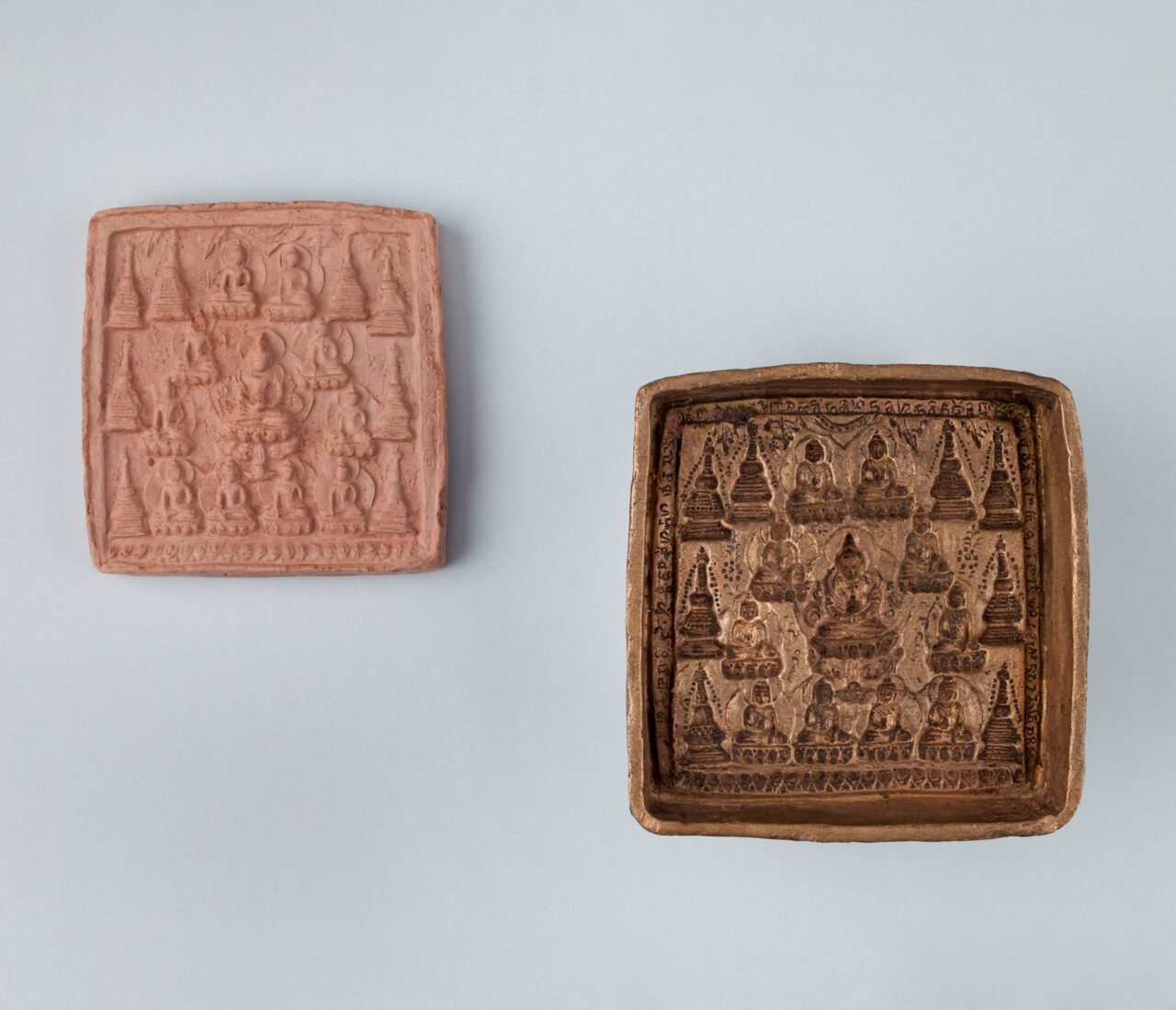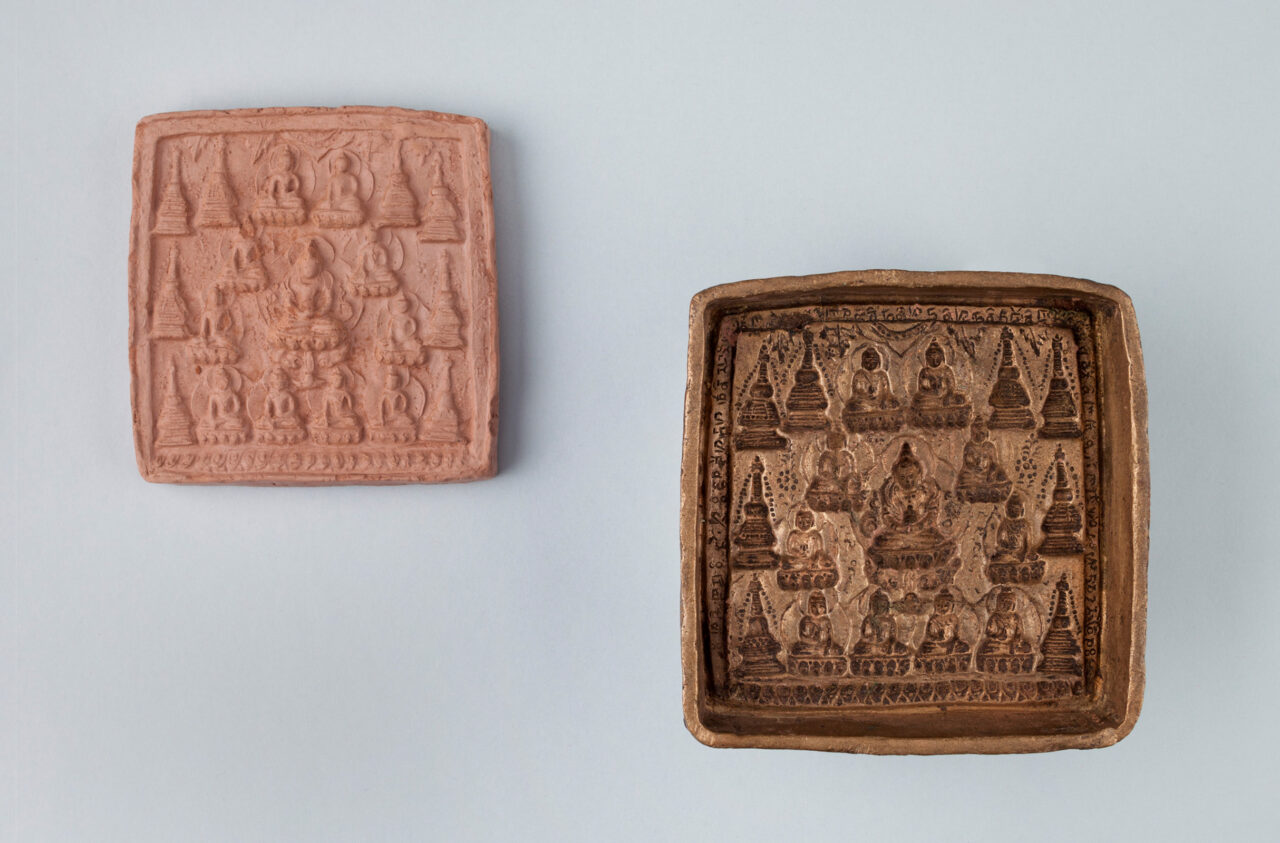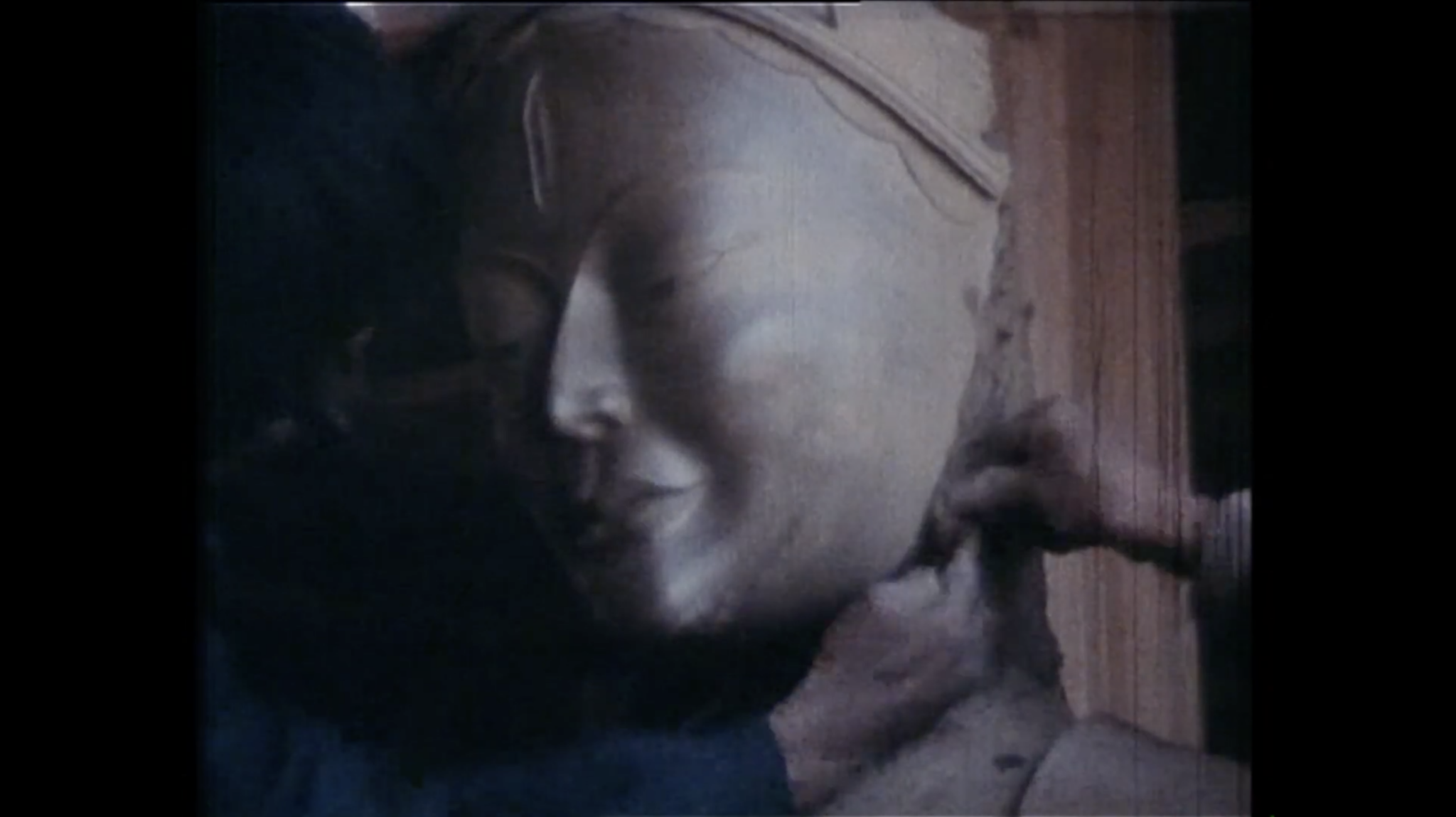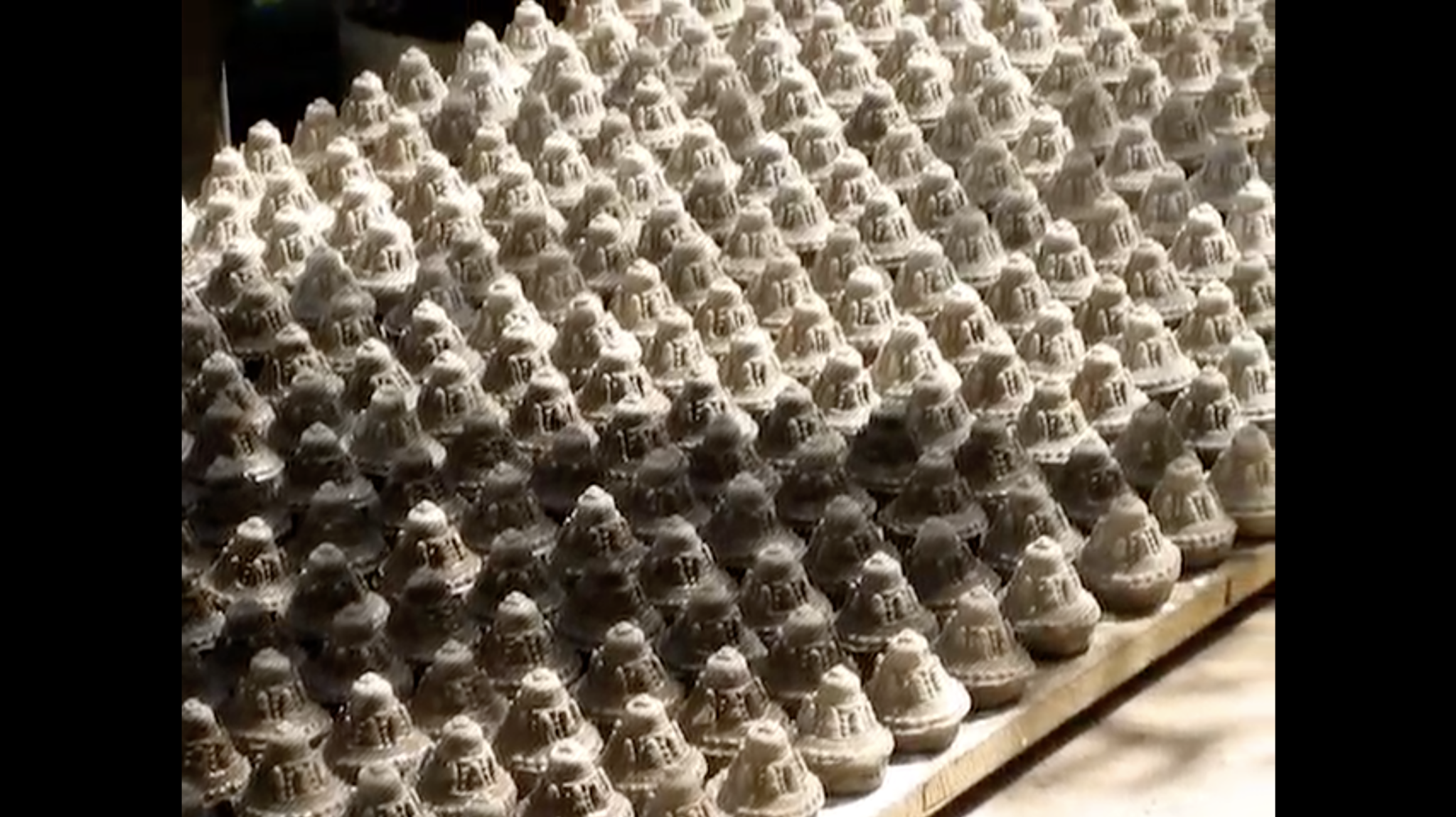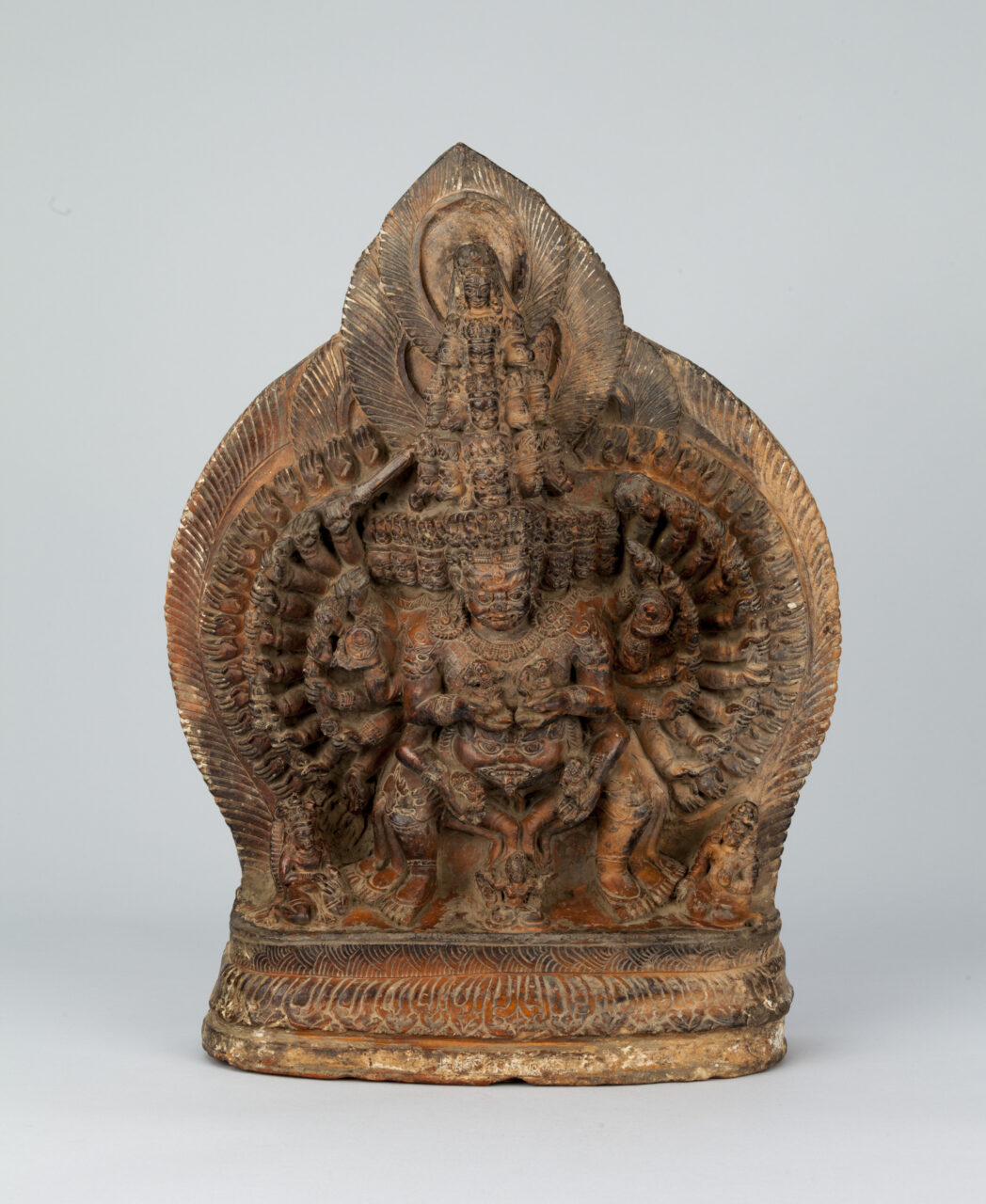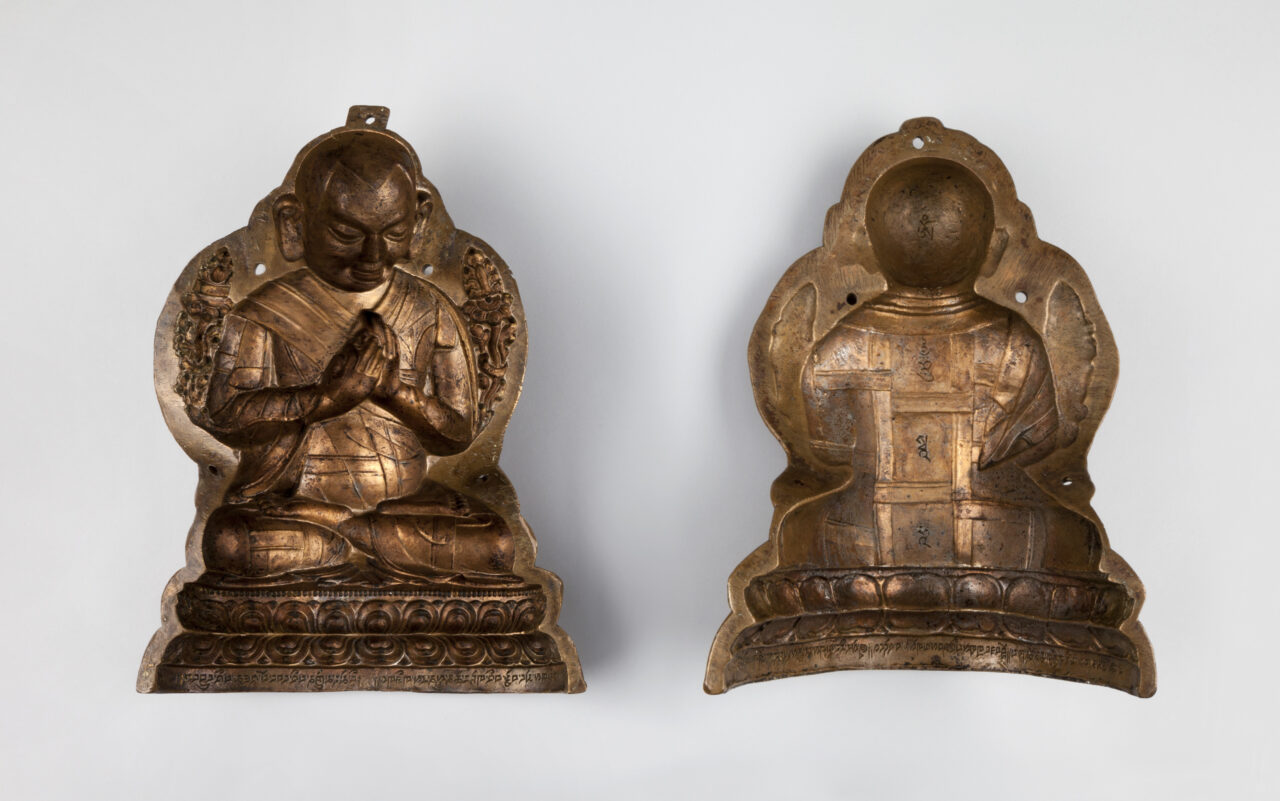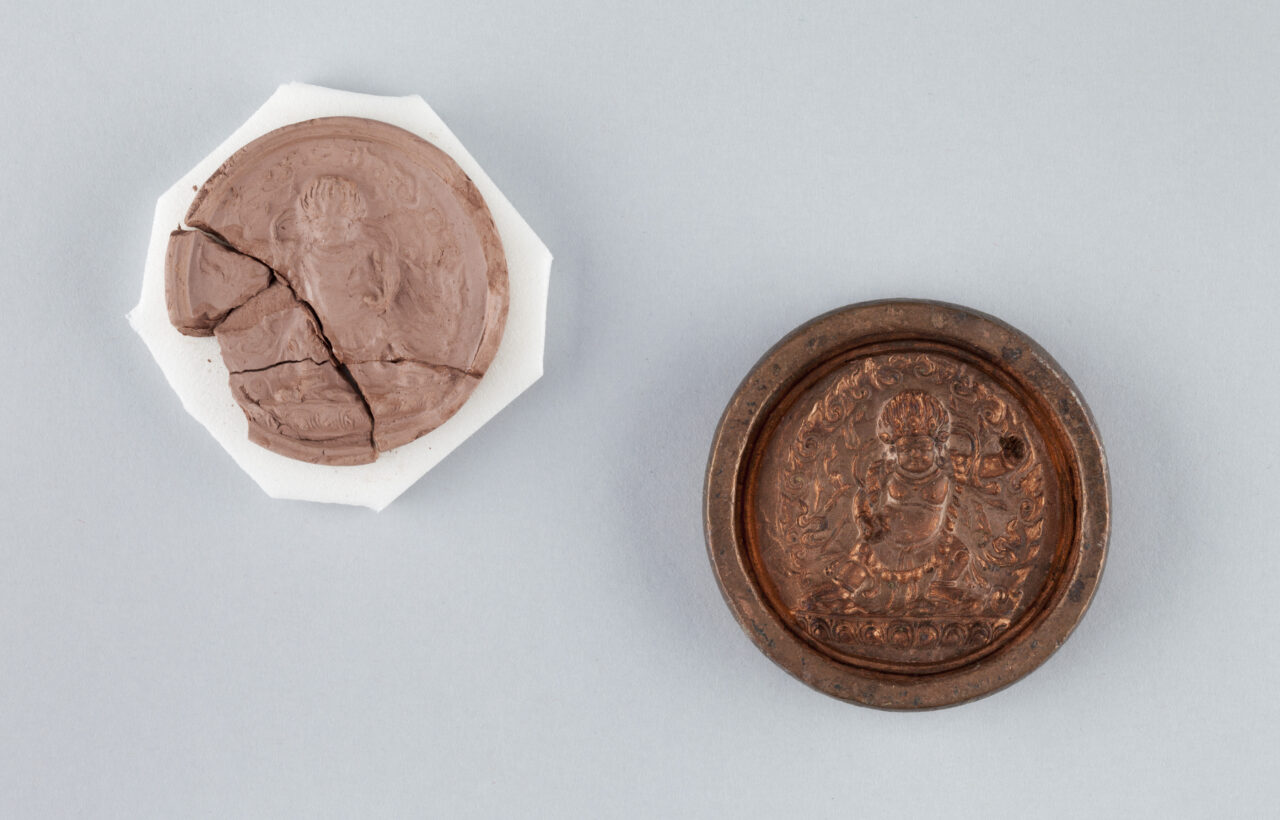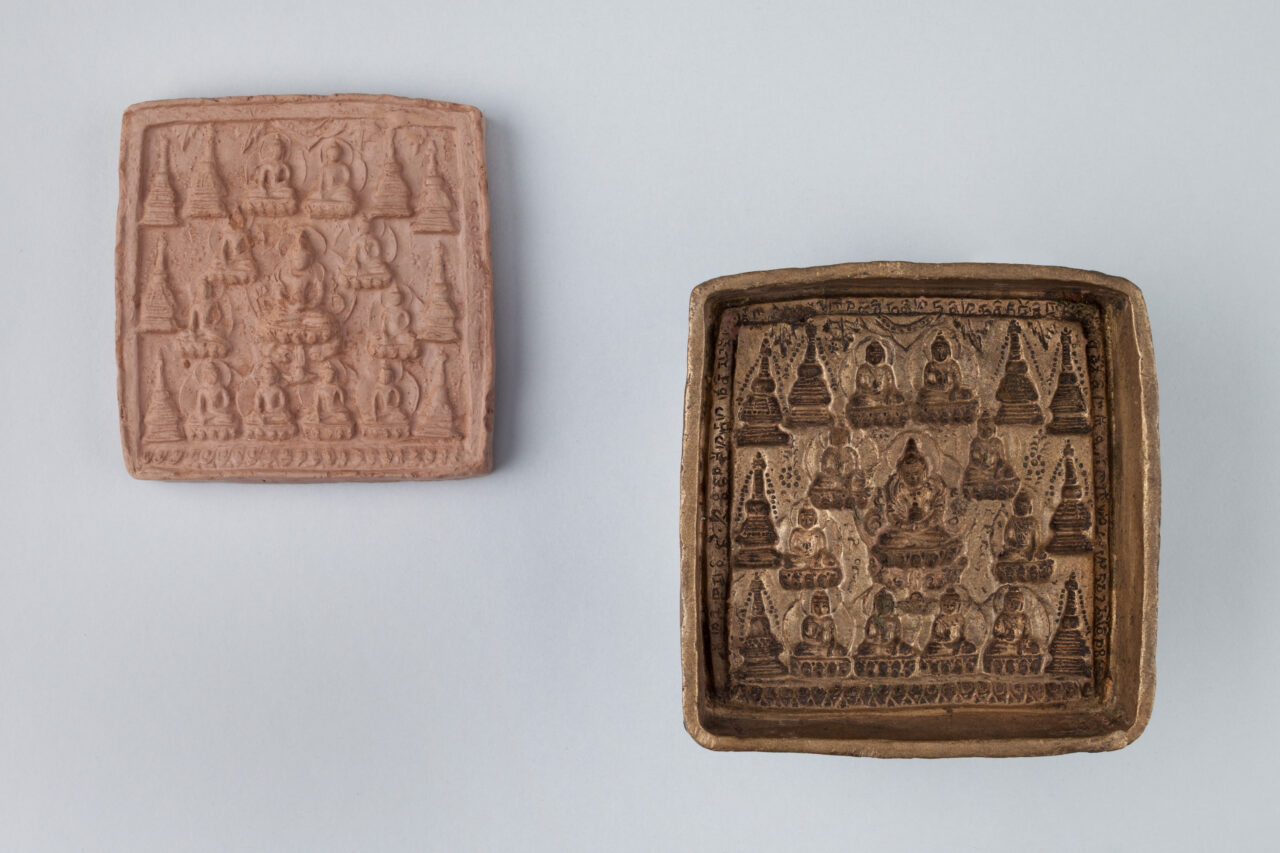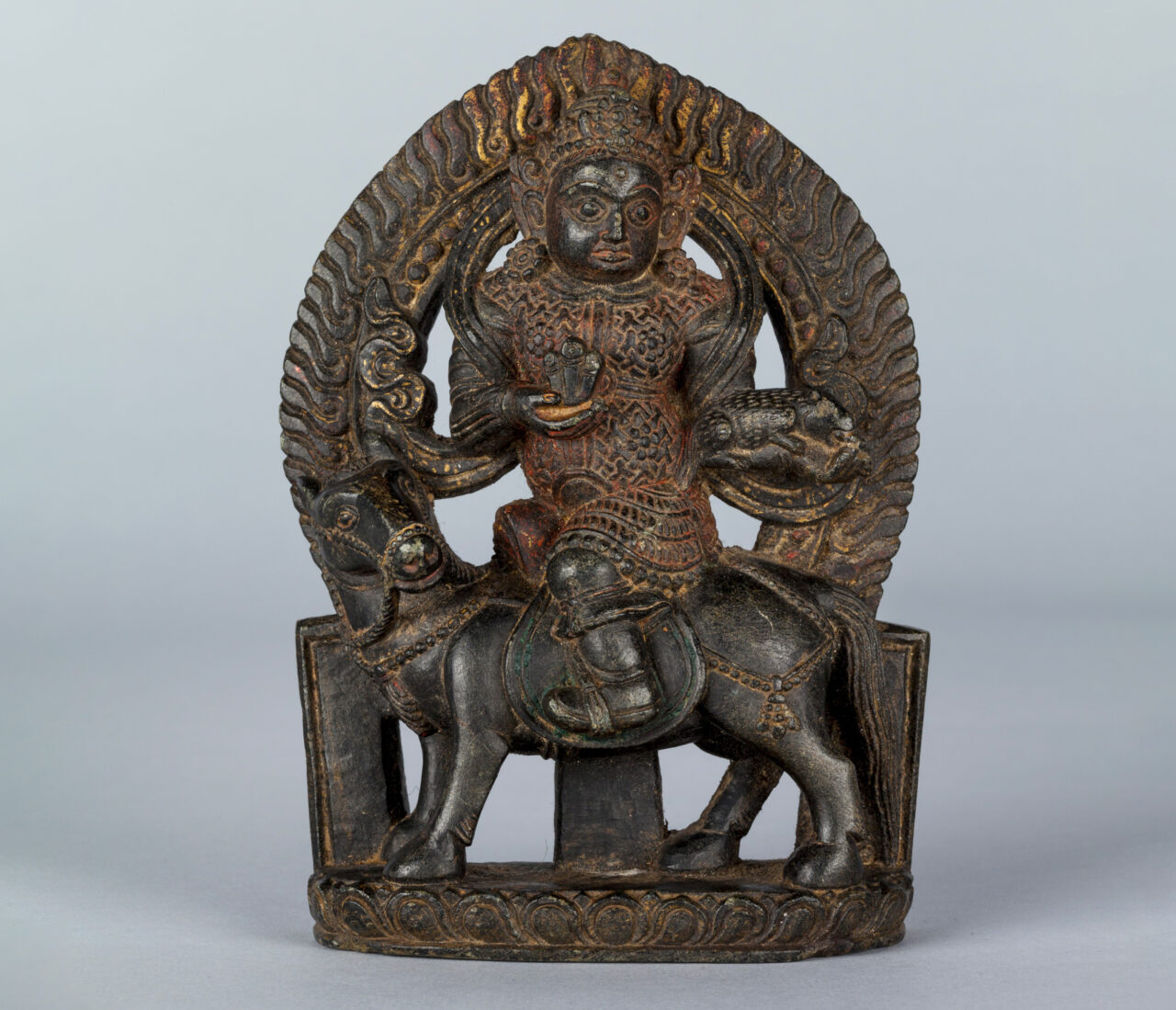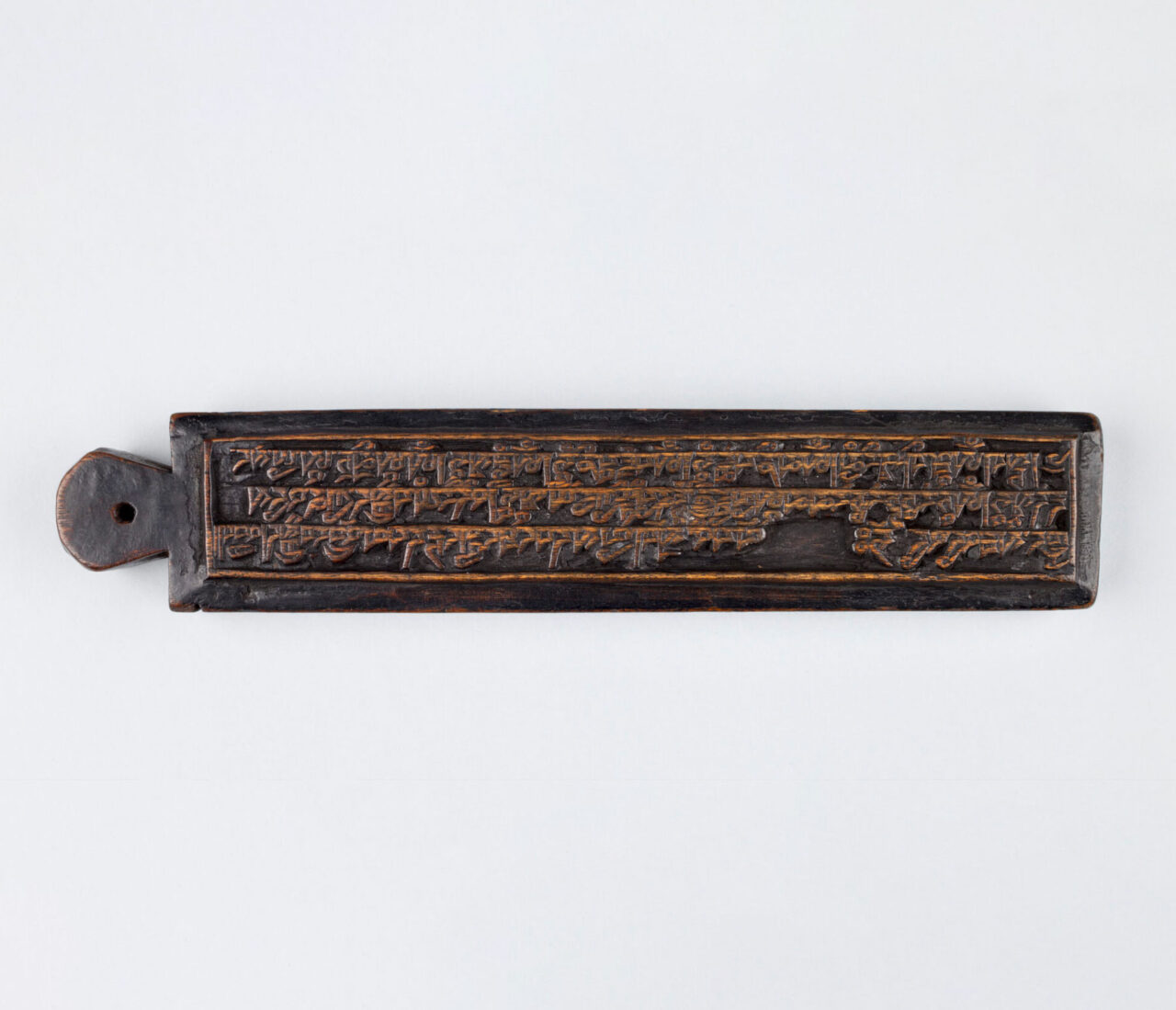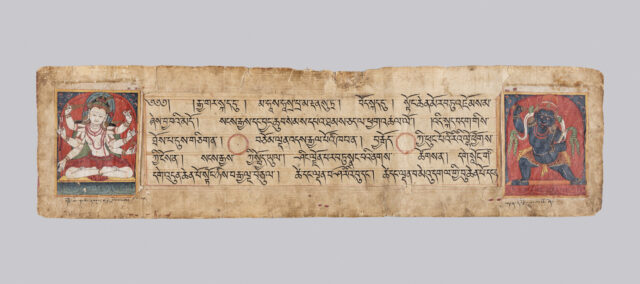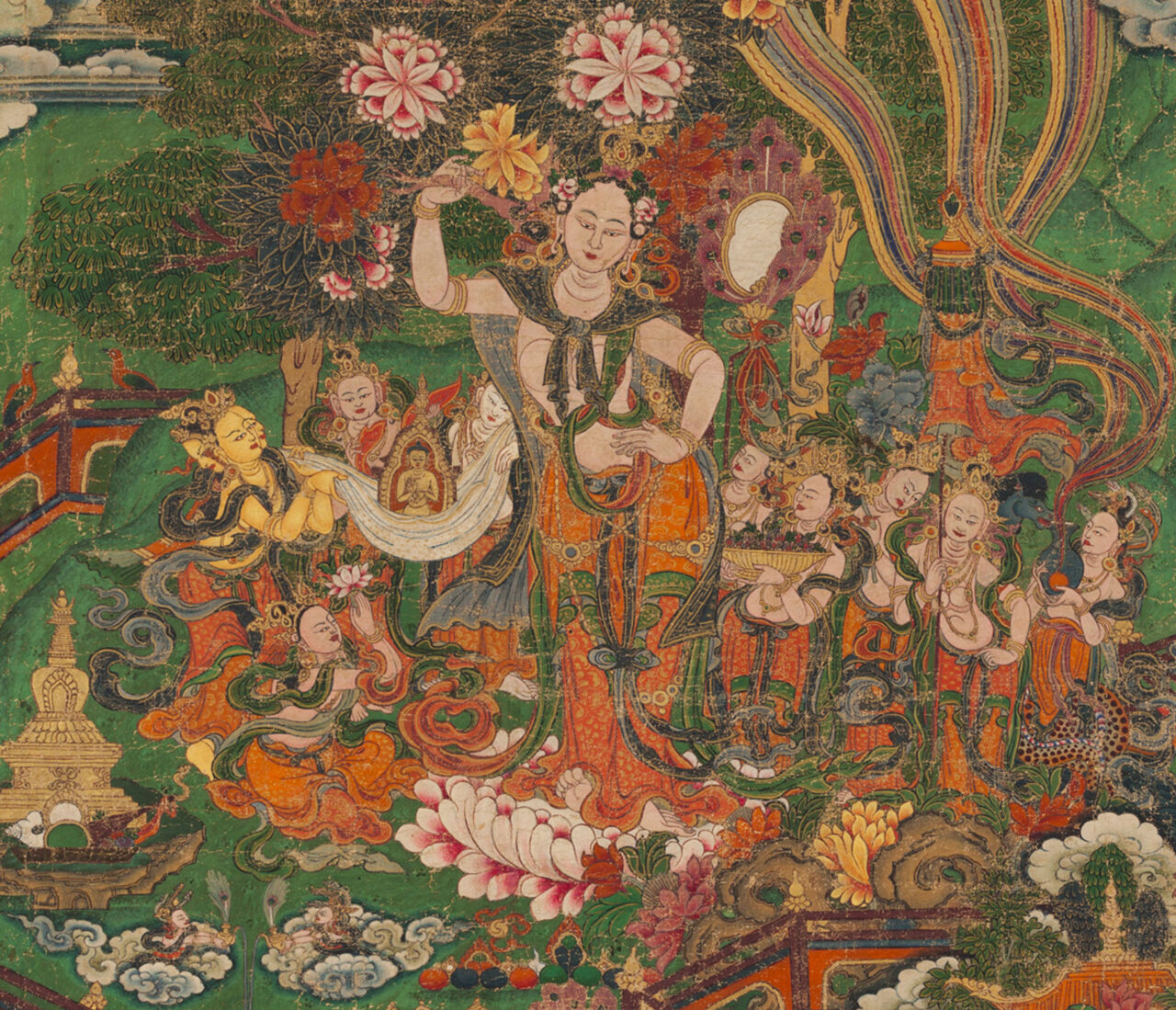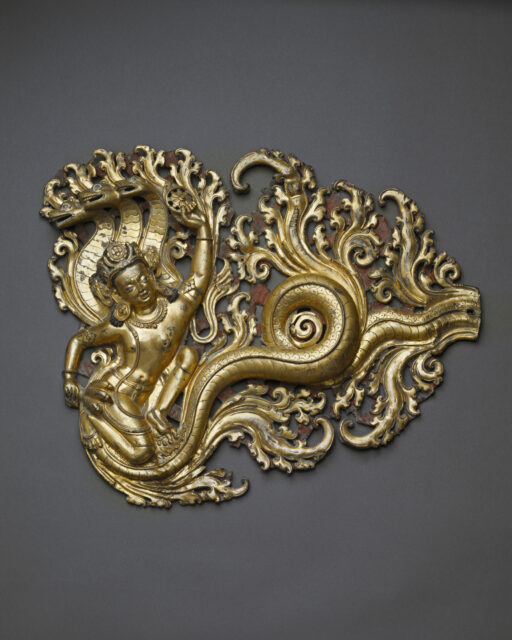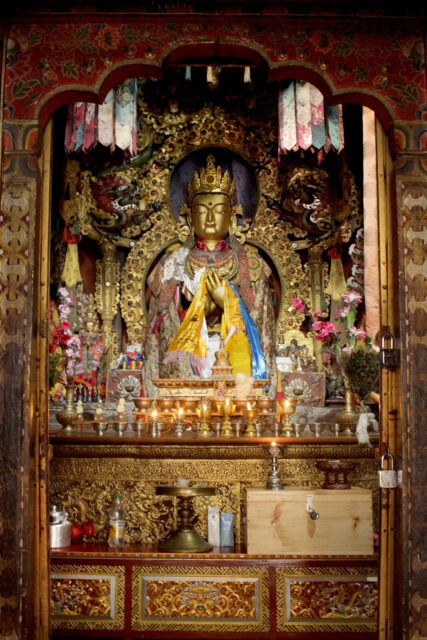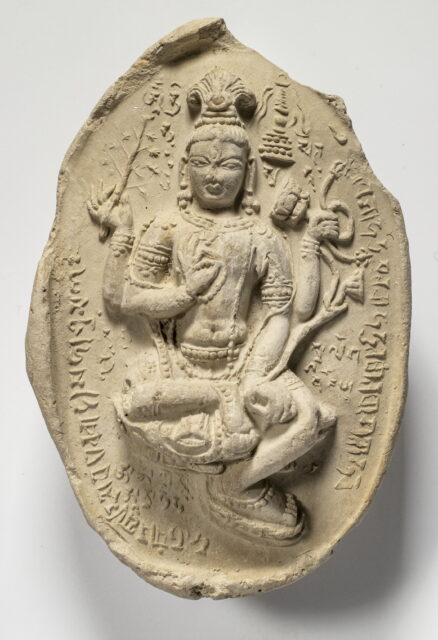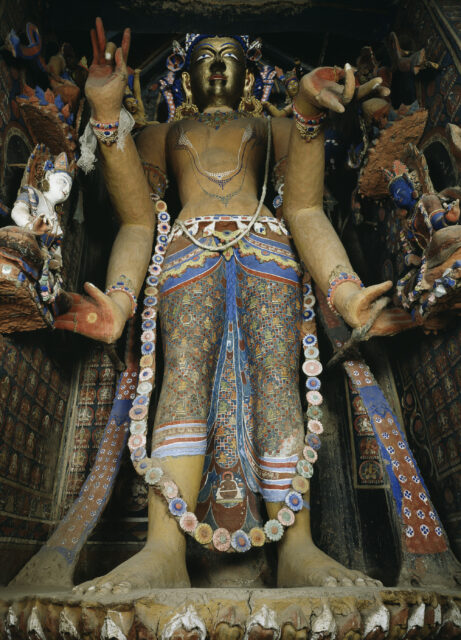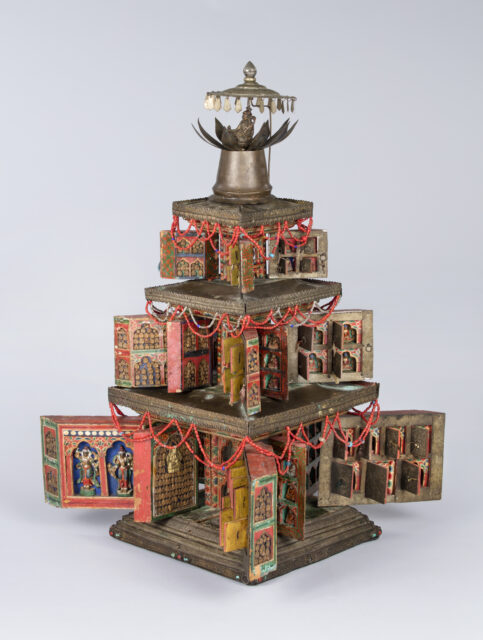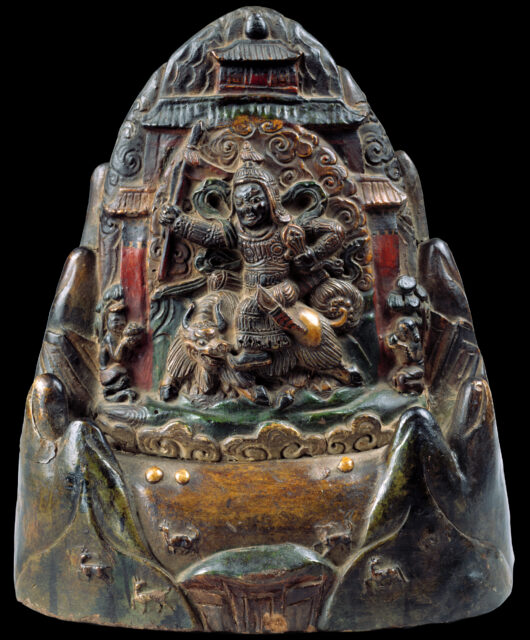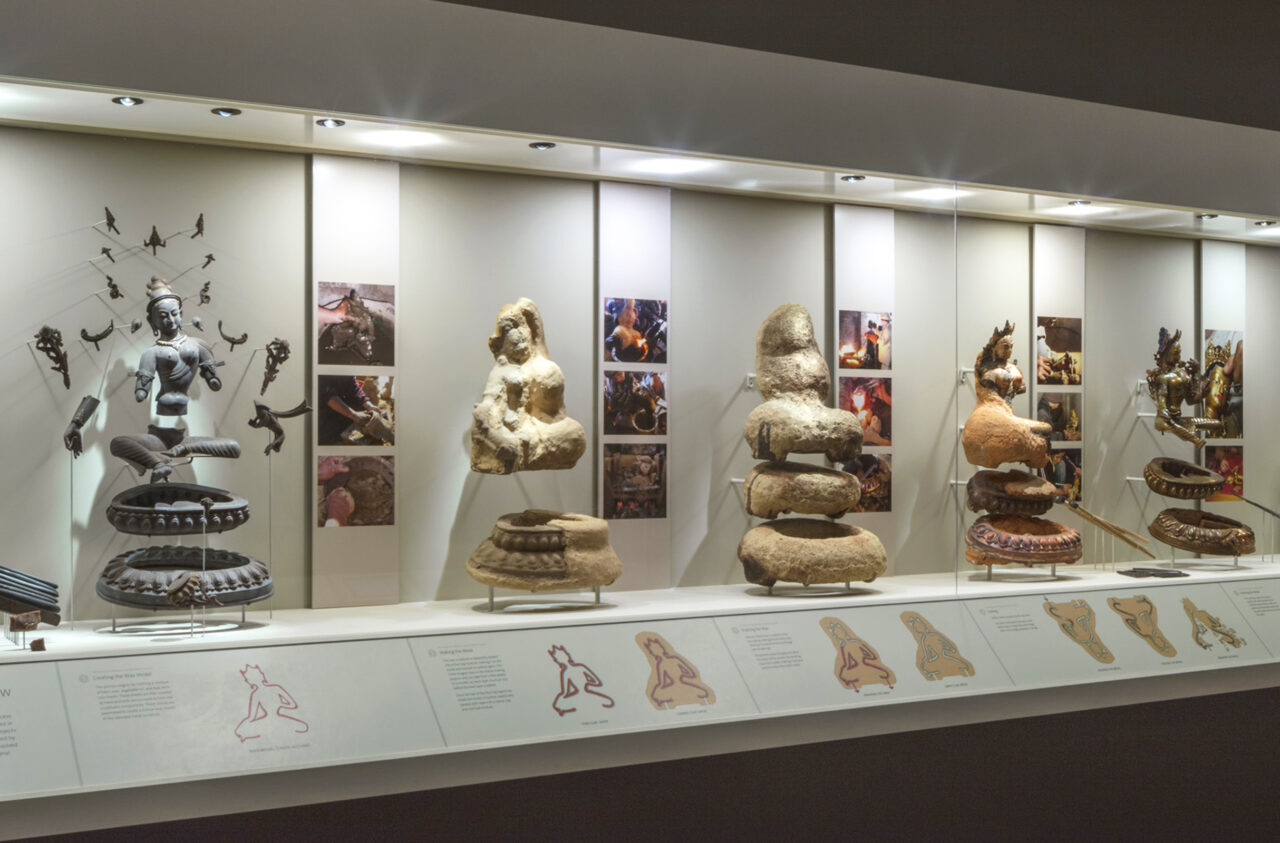Unfired clay remains the most commonly used material for sculpture in the Himalayas.
In one traditional method, artisans mix clay with paper and water to form hollow sculptures. They gradually build the inner form using coiled clay strips thinned by hand, then use much finer clay for the surface details of the sculpture. Next they attach the separately molded limbs, ornaments, and head to the figure. The sculpture is then painted and filled with consecrating materials that establish it as a representation of its subject.
Large clay statues can serve as main images in temples. Clay bricks often form the base of these statues. A wooden armature provides the underlying structure and helps secure the sculpture to the wall. Smaller clay images, in the round and in relief, are created using molds. Clay plaques (tsatsa), made by pressing clay into metal molds, are mass produced and often deposited in stupas to accumulate religious merit.
The videos below shows craftspeople making a clay sculpture in Bhutan (fig. 1) and tsatsas in Dharamsala, India (fig. 2).
